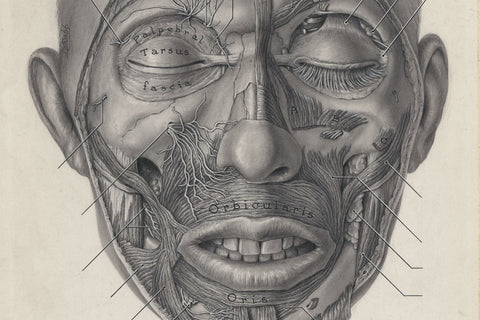My shopping cart
Your cart is currently empty.
Continue ShoppingGUEST BLOG | by Kali McCord
Hey all! I am Kali and I am the outreach coordinator at Lyon Road Art. I have been at LRA for 3 years, and have done everything from printing, to event planning, to podcast recording! I am constantly thankful for Lyon Road Art and the wonderful team of ladies I get to work with each day.
I wanted to share the incredible story of the female illustrators behind Grant's Atlas of Anatomy with you, in light of Women's History Month last month. Lately, I have been looking further into the history of female doctors and artists to share in the podcast, and found the story of Grant's particularly interesting!
For those of you who don't know, Grant's Atlas of Anatomy has been a valuable resource for doctors, medical students, and medical illustrators for over 75 years. J.C.B. Grant, the chair of anatomy at the University of Toronto in the 1940's, wished to create an anatomy atlas where the labels were primarily in English.
Grant reached out to Maria Wishart, the founder and head of the Medical Art Service, who recommended Dorothy Foster Chubb. She was a strong-willed, bold woman raising a family, and was quickly hired as the illustrator in 1941. Chubb illustrated the images in Grant's with carbon pencil. The common medical illustration technique at the time was to use carbon dust. Artists would use sandpaper to turn a piece of carbon into dust, which they would then paint into the cold-press paper. These high-contrast illustrations translated incredibly successfully into print. Chubb completed the majority of the illustrations seen in Grant's Atlas of Anatomy in a single year.



When it was published in 1943, Grant's stood apart from other medical textbooks because of its realistic illustrations. Around that time, it was common to idealize the illustrations, so they tended to be more beautiful than accurate. After the publication of the atlas, more women began to pursue medical illustration and other medical professions. Because they were able to illustrate and maintain a family at the same time, medical illustration opened many doors for young women interested in art and medicine in the early 20th century who previously did not believe they could have a place in the medical field. The atlas would not have been as accurate or revolutionary had it not been for Chubb's incredible talent. Her mastery of carbon dust illustration stood out and her success paved the path for future female medical illustrators.
______
To learn more about Dorothy Foster Chubb and the women behind Grant's Atlas of Anatomy,
tune into Intersections: Art and Medicine with Lyon Road Art in the next couple weeks for a longer episode!